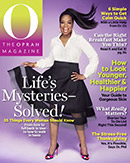—————————
Careers are really made now online, and you’re going to see it more and more in the future,” said Dan Schawbel, a personal branding expert and author of the upcoming book “Promote Yourself: The New Art of Getting Ahead.” “Think of the online world as a global talent pool. That’s where you’re going to be finding people. If you don’t exist in that pool — having your own Web site, being on the top social networking sites — then you can’t compete in that pool. And once you’re in the pool, you have to constantly manage that presence. It should be part of your daily routine, part of your career.”What do you bring to the table? Make sure everyone knows.
To this (quoted in the January 21 Chicago Tribune article by Rex Huppke titled “I Just Work Here”), I say a hearty “AMEN!” As an independent consultant, job seeker, nonprofit Board member, and transitioner to a new market, I have seen over and over how LinkedIn, Twitter, Facebook, and other platforms have brought opportunities to me, kept my colleagues up to date on my progress and movements, allowed me to share in discussions, informed me about events and people and in short, expanded my professional community in ways I never could have done on my own and/or in the “live” world.
For anyone changing careers or jobs, marketing or selling a product or service (including their own expertise), I highly recommend becoming better at branding. You don’t have to be an expert right away – just start with one thing – update your LinkedIn profile or join a discussion group; make a commitment to send one tweet every week and start following experts in your field… start small and your life will take on a new dimension. Why? As Heppke said, “That’s the world we live in, folks. We’re no longer just people — we’re warm-blooded versions of Nike or Budweiser or, in my case, Breyer’s or Dairy Queen.”
So what do you do to get started or maintain a social media brand presence? Here are a few tips for the simplest approach:
1. Find five key leaders in your field on Twitter, and follow them. Read their posts every day.
2. Update your LinkedIn profile with your most recent accomplishments, no matter how mundane you think they might be. Events you’ve attended, speakers you’ve heard, papers or articles you’ve written, research you’ve done, things that have inspired you… these (with url links if possible so people can find out more) are worth mentioning and could be helpful to others.
3. Join at least two LinkedIn professional discussion groups in your field. (If you are a student, join your school’s discussion group or start one and tell fellow classmates about it.)
4. If you have a blog, be sure to link it to your other social media platforms.
In all your communications and interactions, show people what you bring to the table, what you offer that is uniquely yours and of value to others.
This is your best chance to shine and stand out in 2013!
 Although research is still catching up, experience working with many types and sizes of companies and organizations shows that diversity and inclusion (D&I) are important to the brands and reputations of those seeking to recruit and retain employees, create satisfactory relationships with suppliers, attract lucrative business partnerships, satisfy requirements of government and legislative bodies, and excel in overall reputation. Communication professionals have a unique opportunity to lead D&I strategy for their organizations, since we are in charge of corporate reputation and branding, and we know how to influence and monitor opinions of stakeholders, and using that knowledge to create effective business and reputation strategies.
Although research is still catching up, experience working with many types and sizes of companies and organizations shows that diversity and inclusion (D&I) are important to the brands and reputations of those seeking to recruit and retain employees, create satisfactory relationships with suppliers, attract lucrative business partnerships, satisfy requirements of government and legislative bodies, and excel in overall reputation. Communication professionals have a unique opportunity to lead D&I strategy for their organizations, since we are in charge of corporate reputation and branding, and we know how to influence and monitor opinions of stakeholders, and using that knowledge to create effective business and reputation strategies.



 A Chicago Tribune article a few days ago asserted that news reporting of research findings and other science topics is usually condensed by reporters to the point of over-simplification that leads readers to misinterpret the actual research findings and what they mean. All of us in PR who have struggled to write the audience-friendly healthcare press release headline or Twitter post understand all too well. The general audience appetite for technical information – content with many figures and hard data – does not warrant in-depth analysis. However, Tribune reporter Cory Franklin gives some practical and effective guidelines for science reporting that can ease our dilemma when churning our content for our health, medical, biotech, science, and pharma clients. Check out the
A Chicago Tribune article a few days ago asserted that news reporting of research findings and other science topics is usually condensed by reporters to the point of over-simplification that leads readers to misinterpret the actual research findings and what they mean. All of us in PR who have struggled to write the audience-friendly healthcare press release headline or Twitter post understand all too well. The general audience appetite for technical information – content with many figures and hard data – does not warrant in-depth analysis. However, Tribune reporter Cory Franklin gives some practical and effective guidelines for science reporting that can ease our dilemma when churning our content for our health, medical, biotech, science, and pharma clients. Check out the 
